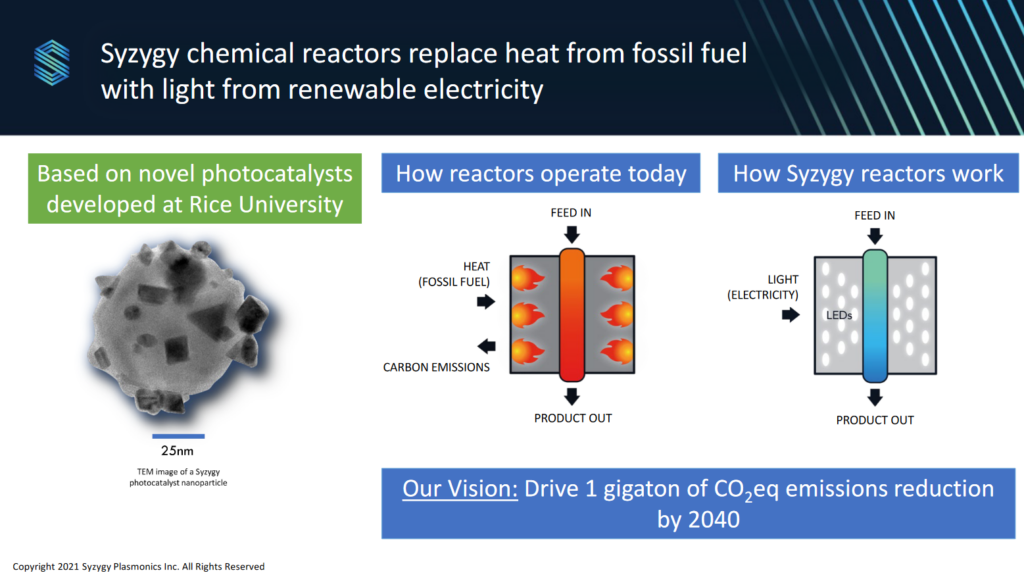Syzygy & LOTTE join forces to deploy cracking tech in South Korea
By Julian Atchison on September 06, 2022

Syzygy Plasmonics, LOTTE Chemical, LOTTE Fine Chemical, and Sumitomo Corporation of Americas announced they will join forces to deploy & test Syzygy’s fully-electric, photocatalytic ammonia cracking reactor at a commercial scale. The reactor will be installed and brought online in the second half of 2023 at LOTTE Chemical’s HQ in Ulsan, South Korea. The tech will allow LOTTE to combine renewable energy & imported ammonia to produce zero-carbon hydrogen for use in chemical manufacturing.
Syzygy has developed platform reactor technology that uses light from ultra-high-efficiency LEDs to power chemical reactions by removing the need for heat from burning fuel, which is how traditional carbon intensive chemical reactors are powered. Syzygy’s process offers a new way to electrify chemical manufacturing and eliminate emissions associated with powering chemical processes. The company has demonstrated through extensive lab and pre-commercial-scale testing its ability to efficiently split ammonia and produce hydrogen gas without combustion. Development results show the technology will not only reduce the carbon footprint of hydrogen production, but it will also help reduce costs.
Explanation of Syzygy Plasmonics’ cracking reactor tech, from the official press release, 24 Aug 2022
Simply improving existing tech isn’t enough to reach the world’s decarbonization goals. Stopping climate change will require industries to reimagine what is possible…We have demonstrated the ability to replace heat from combustion with renewable electricity in the manufacture of foundational chemicals like hydrogen.
Syzygy Plasmonics CEO Trevor Best in his organisation’s official press release, 24 Aug 2022
LOTTE headlines other ammonia collaborations
LOTTE Chemical have also announced a tie-up with ITOCHU this week, with a focus on jointly developing the Japanese and Korean clean ammonia markets. ITOCHU announced a collaboration of its own this week, pairing up with Sasol to jointly develop a supply chain for Sasol’s renewable ammonia export-oriented projects in South Africa. The ammonia will be used as a zero-carbon bunkering fuel, or for co-firing in thermal power generation.